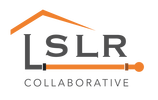|
See the EDF blog.
Note to readers: As we all grapple with the grave global health challenge from COVID-19, we want to acknowledge the essential service that the public health professionals at water utilities provide in delivering safe water not only for drinking but for washing our hands and our surroundings. In the meantime, we are continuing to work towards improved health and environmental protections – including reducing lead in drinking water. We’ll plan to keep sharing developments regarding lead in drinking water that may be useful to you. In the meantime, please stay safe and healthy. With the comment period now closed on the Environmental Protection Agency’s proposed revisions to its Lead and Copper Rule (LCR), agency staff are busy reviewing the 687 distinct comments submitted to the docket with a goal of finalizing the rule by the end of the year. To help water professionals plan ahead, the cover article in the March edition of Journal AWWA walks readers through the proposal and its implications. It ends with six suggestions to water systems that include developing a service line material inventory and identifying funding strategies to accelerate full lead service line (LSL) replacement. With this suggestion in mind, we are continuing our work evaluating state efforts to develop LSL inventories by taking a closer look at reporting by Wisconsin municipal and private water utilities[1] to the state Public Service Commission (PSC) for calendar year 2018.[2] Of the other states with mandatory inventory reporting, we have previously covered Illinois in detail and will evaluate Michigan’s newly released reports soon. The only other state with mandatory reporting is California, but it has limited value because it only covers the portion of the service line owned by the utility and excludes the portion on private property. Wisconsin’s reporting is similar to Illinois’, but more detailed Like Illinois, Wisconsin requires annual reporting and posts the information online in a publicly accessible format as it is received. However, Wisconsin differs by requiring utilities to:
See the full blog. Comments are closed.
|
Have a suggestion for an article or blog to add?
Let us know! Type
All
Date
April 2023
|


 RSS Feed
RSS Feed